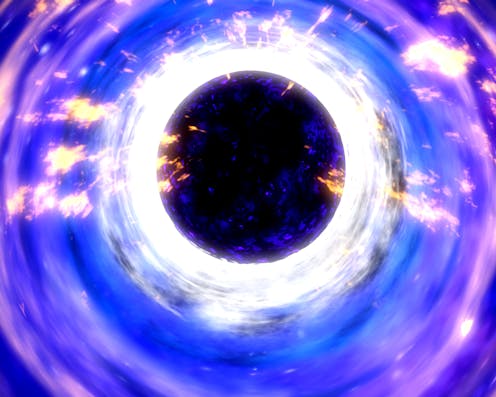Rossi X-ray Timing Explorer ends mission after 'listening' to the universe
The little-known Rossi X-ray Timing Explorer spacecraft was like a Geiger counter for the universe, listening to black holes and zombie stars.

On May 1, NASA’s Rossi X-ray Timing Explorer spacecraft reentered and burned up in Earth’s atmosphere. Although not as well-known to the public as Hubble and Chandra, RXTE ranks among NASA’s most successful astrophysics missions. For the past 16 years RXTE continuously “listened” to the streams of X-ray radiation coming from black holes, neutron stars and pulsars.
Pulsars probe the physics of matter under the most extreme conditions, answering questions not accessible in earthbound laboratories. Along with black holes, neutron stars are responsible for injecting the majority of ionizing radiation – X-rays and gamma rays – into the the interstellar medium, and their birth and death events produce the majority of the elements heavier than iron. The surprising conclusion is that they sculpt the conditions needed for life to arise in the cosmos.
Whereas some telescopes look at the visible wavelengths that stars emit, RXTE honed in specifically on X-rays. Compared to the relatively unchanging night sky we see with our eyes, the X-ray universe is dynamic and filled with bursts, pulsations and flares. This radiation comes from matter being heated to millions of degrees as it is swallowed up by “zombie stars.”
Far from being super-rare, our own galaxy probably contains millions of these degenerate stellar relics, left behind after massive stars exploded during a supernova. Most such zombie stars are invisible, but RXTE could hear the “sound” of them munching on nearby stars!
You may know the familiar clicking sound of a Geiger counter from TV and movie depictions of scientists working with radioactive materials. Similarly, RXTE was like a giant Geiger counter, the size of an SUV, filled with Xenon gas and a grid of high voltage electrodes. Each individual X-ray photon that passed through the gas generated a tiny voltage pulse that registered on sensitive electronics and recorded its precise arrival.
Using computer codes based on the same math used by the spectrum analyzer in a music recording studio, astrophysicists like me and my students at UMass Lowell scan the stream of incoming photons for patterns. Then we use physics to interpret the patterns much as a cardiologist interprets an EKG trace. We can reveal what is going on as matter falls in into black holes, or as it swirls around a neutron star – the densest and most magnetic objects in the universe.
RXTE detected many pulsars – neutron stars that produce X-rays in a similar way to the auroras on Earth, but at vastly higher energies. The pulsar’s magnetic field (a trillion times stronger than the Earth’s field) captures the stellar wind, a flow of energetic particles from a neighboring star, just like the solar wind is captured by the Earth. The pulsar’s magnetic field then accelerates these particles toward its poles, where they crash down and release their energy, lighting up the polar regions like auroras.
RXTE is dead, but astrophysicists are exploring the fundamental physics of neutron stars and black holes through its huge archive of data. We analyze pulsars’ signals, and the noise emitted by black holes, using a combination of math that includes Einstein’s General Relativity, and Electromagnetism. We then build computer models that try to physically map their X-ray “northern lights.”
When I was a student back in the late 1990s, we pointed RXTE at a nearby galaxy, the Small Magellanic Cloud, hoping to discover how many pulsars existed outside our own galaxy. We were amazed to find three pulsing at the same time. Our record became seven simultaneously active pulsars, eventually reaching a total of more than 50 in that tiny galaxy.
Today other spacecraft, including Chandra, Swift and XMM-Newton, image the X-ray sky, but they cannot provide those all-sky X-ray “ears.” We’re hard at work on a new mission called STROBE-X for launch in the 2020s that will once again let us hear the music.
Silas Laycock receives funding from NASA. He is affiliated with the American Astronomical Society, High Energy Astrophysics Division.
Read These Next
Data centers need electricity fast, but utilities need years to build power plants – who should pay?
How many data centers will be built – and how much electricity they’ll need – is uncertain. Being…
Can scientists detect life without knowing what it looks like? Research using machine learning offer
A new machine learning model explores the boundary between biological and nonbiological chemistry.
Donor-advised funds have more money than ever – and direct more of it to politically active charitie
When foundations make grants to DAFs, the digital trail normally created instead becomes a dead end.






